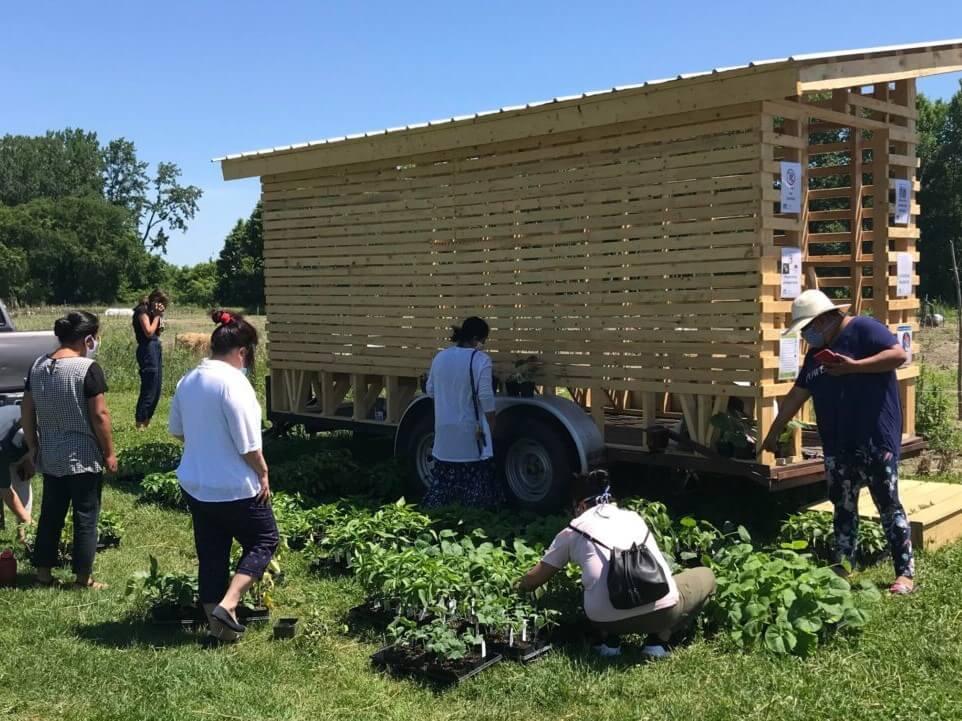Our signature Urban and Peri-urban Agroecology (UPAE) program is built around a long-term, participatory research partnership with four local organizations in Burlington, VT. We carry out research, learning, and action with community gardeners, farmers, residents and others to learn about expressions of urban agroecology in Burlington, while collaborating on projects to deepen agroecology in each context.
Urban agroecology is the application of agroecological principles to food systems in urban and peri-urban spaces. Our work in Vermont is a part of a wider movement that views urban agroecology as “a stepping stone to collectively think and act upon food system knowledge production, access to healthy and culturally appropriate food, decent living conditions for food producers and the cultivation of living soils and biodiversity, all at once. Urban agroecology is not a goal, yet an entry point into, and part of, much wider discussions of desirable presents and futures” (Van Dyck et al., 2017, p. 5).
Banner Image

Context
Context
In a predominately rural state like Vermont, it may seem incongruous that we are exploring examples of urban or peri-urban agroecology. However, Burlington’s position as a hub of both food distribution and consumption and persistent questions about land access and food sovereignty signaled that the framework of agroecology has relevance and potential here. Our research responds to these circumstances and explores the practices and relationships that emerge. To date, we have chosen to focus on sites involved in food production, but we are open to expanding to additional segments of the Burlington food system in the future.
“The deep mutual embeddedness of farming and food systems emphasizes that ‘agroecological food’ is not only food which is produced using agroecological agricultural methods, but also food going into a system which is built on the basis of agroecological principles, and where resources are part of full cycles, that is, also going from where food is eaten to where food is grown” (Vaarst et al., 2018, p. 704).
UPAE in Burlington, VT
Our Burlington Urban and Peri-urban Agroecology (UPAE) initiative focuses on the challenges and opportunities of implementing agroecology with four nonprofit organizations focused on food systems and working in or on the periphery of the city of Burlington. Following our own curiosity about whether agroecology was familiar to them, and/or resonated with them, we began meeting periodically and research questions and partnerships among the groups soon emerged. Our first collaborative effort was a comparative study on urban agriculture in the Burlington area and in and around Havana, Cuba funded by a seed grant from the Gund Institute. As part of this, we were able to send representatives from each partner organization to Cuba to attend the ANAP conference, and invited colleagues from Cuba to Vermont through a partnership with the Caribbean Agroecology Institute.
Since then, USDA Hatch funds, with Stephanie Hurley and Rachelle Gould as co-PIs, have supported ongoing research using a principles-based approach to look at expressions of agroecology within each organization. Dr. Maria Juncos-Gautier, a member of the ALC, conducted her doctoral dissertation field research on urban agroecology in Burlington in partnership with the Intervale Center. Several other members of the community of practice have worked on or are working on related topics including Dr. Gabriela Bucini, Dr. Tatiana Gladkikh, Josiah Taylor, Sydney Blume (MS candidate), Avi Bauer (Former AX Fellow), and Claire Golder (Former AX Fellow).